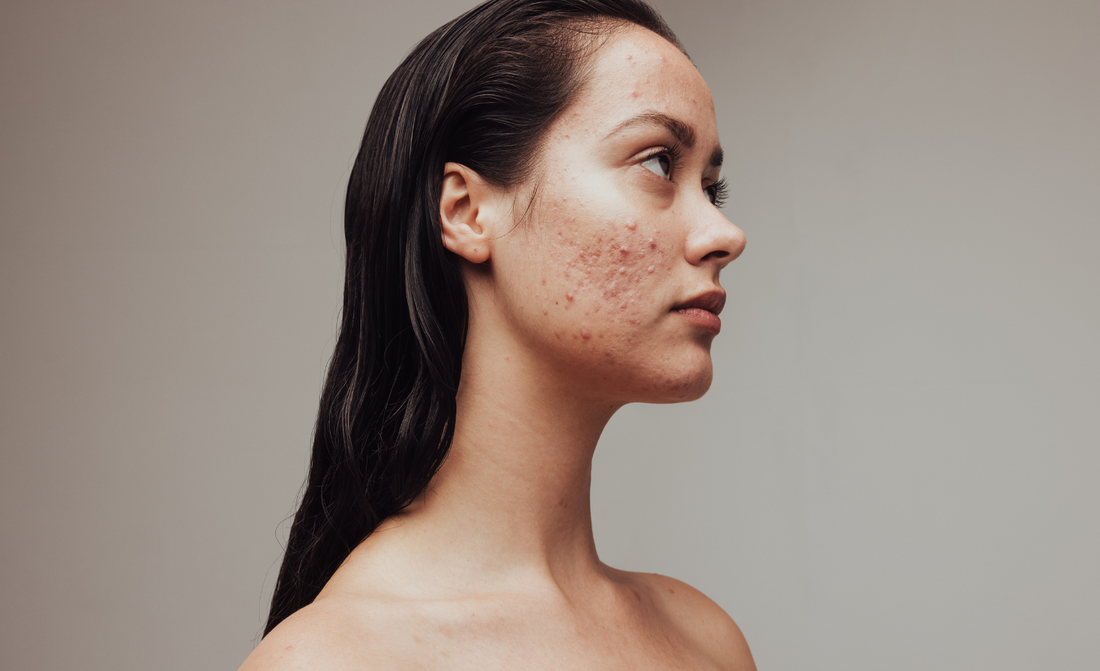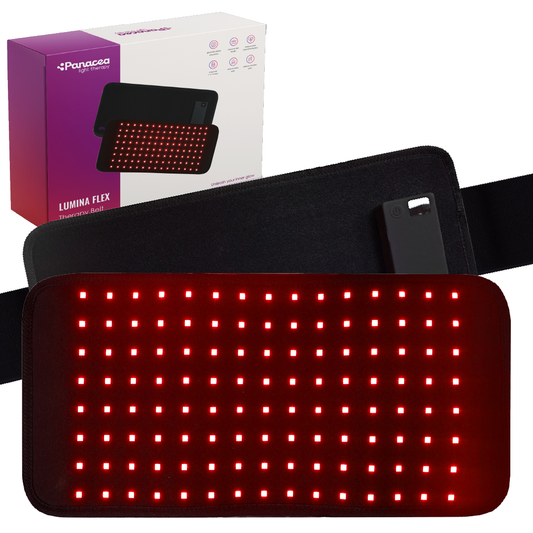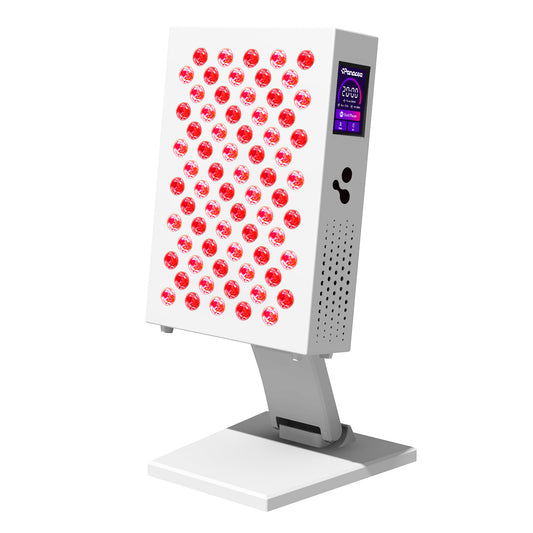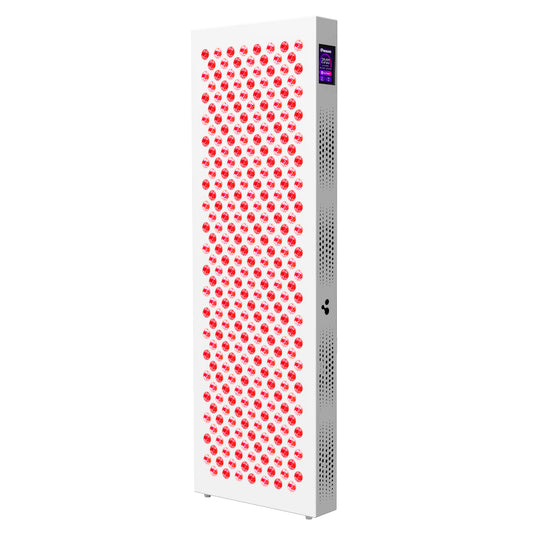
Treating Acne with Red Light Therapy: Does it Really Work?
Acne vulgaris is one of the most common skin conditions worldwide. It mainly affects teenagers and young adults, but acne is also common in adults. The condition is caused by inflamed sebaceous glands and is promoted by excessive sebum production, bacterial overgrowth ( Cutibacterium acnes ) and hormonal fluctuations.
While there are numerous treatments available – from antibiotics to isotretinoin – more and more people are looking for natural, skin-friendly and non-invasive solutions . One of these is red light therapy, a form of photobiomodulation.
What is red light therapy?
Red light therapy (RLT) uses light in the range of 630 to 660 nanometers. These wavelengths are in the visible spectrum and can penetrate several millimeters deep into the skin. Red light is absorbed by skin cells and stimulates mitochondria to produce more ATP (energy).
With acne this is important because red light:
- Inhibits inflammation in the skin
- Sebum production stabilizes
- Skin healing accelerates
- Promotes collagen production (for scar repair)
When red light is combined with blue light (460 nm) , a powerful synergistic effect is created: blue light has an antibacterial effect against C. acnes , while red light moderates inflammatory responses and supports healing.
What happens in the skin when exposed to red light?
| Biological process | Explanation |
|---|---|
| ATP production | The light stimulates the mitochondria, which allows cells to repair themselves faster and inflamed skin layers to renew themselves more quickly. |
| Inflammation inhibition | By inhibiting pro-inflammatory cytokines such as IL-6 and TNF-α, redness, swelling and pain are reduced. |
| Sebaceous gland regulation | Red light reduces the excessive activity of sebaceous glands, which reduces the chance of clogged pores and pimples. |
| Wound healing and scar repair | Collagen synthesis is stimulated, which is important for healing existing pimples and fading acne scars. |
Effective wavelengths for acne
Research has shown that the combination of two wavelengths is the most effective:
-
Blue light (415 nm): Bactericidal for Cutibacterium acnes
-
Red light (630–660 nm): Reduces inflammation and promotes healing
Using red light alone can also be effective, especially for acne prone to inflammation or for people with sensitive skin who tolerate blue light less well.
Scientific substantiation
-
A. Koning et al. – Photodynamic therapy for moderate and severe acne vulgaris
This study describes how red light in combination with a photosensitizer (5-ALA) leads to a significant reduction in acne in test subjects. -
Razoki & Brinkhuizen. (NVDV). Lasers in dermatology.
➤ View PDF
This publication shows that red light therapy calms the sebaceous glands and significantly reduces the inflammatory response in acne. -
Bispo, MAF – Fighting infections with light (University of Groningen)
➤ Download publication
The author describes how red and blue light have an antimicrobial effect and can fight infections, including acne-related bacteria.
Application and treatment advice
| Element | Recommendation |
|---|---|
| Treatment duration | 10 to 20 minutes per session |
| Frequency | 3 to 5 times a week, for at least 6 weeks |
| Recommended devices | LED masks or panels (home use) or professional light therapy in clinic |
| Wavelengths | 630–660 nm (red light), possibly combined with 460 nm (blue light) |
Please note: Although red light is safe, people with light-sensitive skin conditions or those taking certain medications (such as isotretinoin) should consult a doctor.
Conclusion
Red light therapy is a safe and effective method of treating acne vulgaris , especially for those seeking natural alternatives to medications. By suppressing inflammation, regulating sebum production, and speeding up skin repair, red light is a valuable addition to existing treatment strategies.
It also works well in combination with blue light, which targets the bacterial component of acne. Whether you opt for an in-clinic treatment or an at-home device, red light therapy offers a powerful, painless solution with minimal risks.







